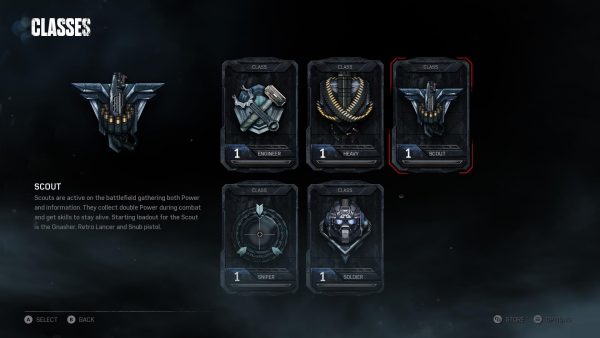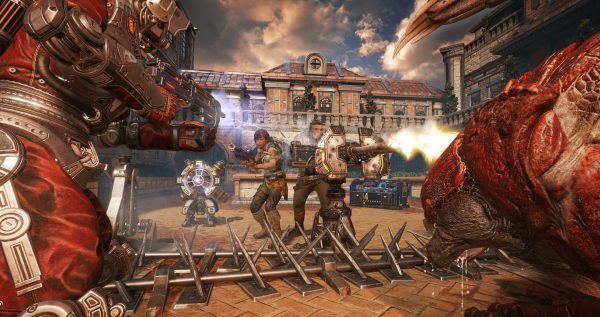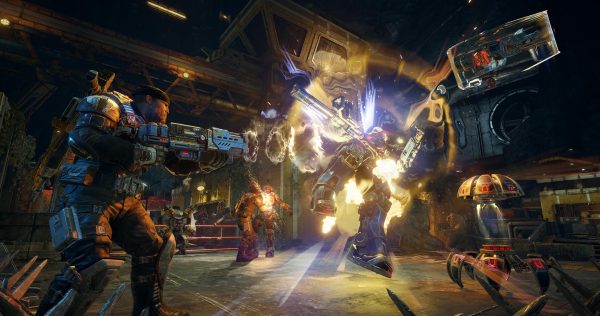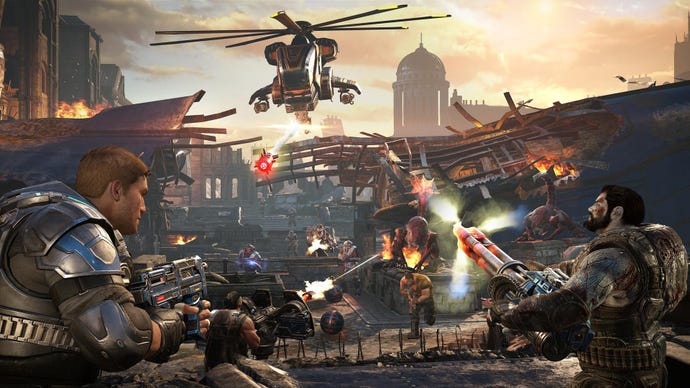Gears of War 4: Nine essential beginner's tips for Horde mode

Gears of War 4: Nine essential beginner's tips for Horde mode
Horde mode returns in Gears of War 4. Horde 3.0, as developer The Coalition has been calling it, is the most advanced, varied, and tactical iteration of the popular co-op mode.
Layering elements from tower defence games on top of a new class system, the new Horde will take you some time to get to grips with. If you played the campaign, you may remember the defence missions where you used a Fabricator to place turrets and barrier as waves of enemies attacked.
This was just a taste of Horde, but it made sure you got a general idea of how the Fabricator works.
In the pages to follow, we’re going to highlight a few key details you should be aware of on your first couple of Horde games. These are early, beginner’s tips designed to make your life easier.
We’ll cover anything from basic mechanics that may not be immediately clear, to core in-round tactics and other lesser-known quirks. Generally speaking, these tips should get you past wave 15 on normal difficulty. We may follow up with another set of tips for more advanced players.

Horde is a commitment, be prepared for long sessions
The new Horde shares a few things with previous versions, in that you’re going to need to make time for it. Unlike older iterations, however, maps are bigger, and the things you do in-between rounds and during are a lot more involved.
For the first ten or so waves, you’re looking at around 20 minutes of play – assuming nothing goes terribly wrong. Go beyond that and you’ll be looking at hours. If you’re aiming to go all the way to wave 50, your session’s going to be north of three hours-long.
Now, this may seem like stating the obvious, but you really don’t want to frustrate your teammates by quitting mid-game, especially on later waves where every little bit helps.
If you’re going to take a break, make it quick, and hang back around the Fabricator to lower your chances of dying.

Always bring a Scout and an Engineer
The Scout and the Engineer are the two most crucial classes in Horde 3.0.
The Engineer is the only class that spawns with a repair tool, making it essential for keeping everything intact between rounds. Although any class can later purchase a repair tool, the one the engineer has is permanent, as opposed to purchased tools that you can drop to pick up weapons.
The Scout is among the most survivable classes, even if the name doesn’t suggest it. The one key reason why you need one on your team is because they get double the amount of Power from pick-ups. Power pick-ups drop from killing enemies, and they’re Horde’s only form of currency.
It goes without saying that you need as many of them picked up by a Scout as possible. Having one on the team means you'll be able to afford expensive defences like turrets and sentries early.
The other classes have other important perks, but these two are must-haves.

Make a habit of depositing Power after every wave
Unless you’re an Engineer who needs some spare Power to repair fortifications, you need to always be depositing all the Power you collected during the round back into the Fabricator.
The Power fund that allows for team revives and fortification deployment is shared among all players. Meaning what you have on you could be just enough for the team to afford a new sentry or barrier.
Hoarding them doesn't help anyone, so don’t do it. This is even more crucial on waves past ten, so you really should be banking them ASAP.

Designate one or two teammates as builders
As we explained in the previous point, the amount of Power in the Fabricator is made up of all pick-ups deposited into it by players. Unfortunately, this also means that anyone can pick and choose any fortification to place it anywhere they want.
This is great, assuming you know what you’re doing. Unfortunately, many don’t, and you could end up wasting your precious resources on a turret that doesn’t see a lot of action, when you could’ve been better served placing three barriers, for instance.
To avoid these frustrations, one or two players on the team should be the only ones whose job it is to place those fortifications. Ideally, you want Engineers on this duty, because they can also repair them.

Always pick up enemy weapons before fabricating new ones
The Fabricator can make weapons, ammo, and grenades, on top of fortifications. We don’t recommend using it for that, however, as your Power is better spent on defences.
A good Horde player should be able to scavenge weapons from the field and adapt to the situation on the fly. Picking up enemy weapons and grenades is a great way to save Power, and to make sure you never run out of ammo.
Of course, this means switching up your playstyle and going out of your comfort zone a bit, but that’s the nature of Horde, and it’s something you should learn to do early. Because later on, when waves get tougher, you won’t have enough Power to spend on ammo.

Weapons and Power pick-ups disappear at the start of the next wave
The weapons enemies leave behind disappear at the start of the next wave. This includes power weapons like the Boomshot, Buzzkill, Dropshot, Mulcher etc. Unless you pick any of them up, anything you leave behind is gone for good.
Until you’re able to make a Weapon Locker, always start off the next wave with a power weapon equipped where possible. It’s practically free damage, especially when you’re low on ammo on your main weapons.
The same goes for Power pick-ups, and they're even more valuable than leftover weapons.

Try to go for bonus objectives
Bonus objectives are extra challenges that pop up every few waves. Some of them require you to get a number of kills with a specific weapon, finish the wave in a set time, and more. You should always try to do them because they offer good rewards.
You’re either getting extra Power, which is never not needed, or you’re getting supply drops. Supply drops contain ammo and weapons, but the great thing is that you can save them for when you really need them. As long as a crate hasn't been opened, it will carry over between waves.
All bonus objectives tell you exactly what you’ll be rewarded with, so that should help you make a decision.

Leave one or two enemies behind on more difficult waves
We don’t mean spare their lives, obviously. What we mean is that because weapons and Power pick-ups disappear after every wave, it’s best to make sure you’ve gathered everything up – especially Power – before the round ends.
Many Call of Duty Zombies players use this trick, and it’s still valid here. A new wave won’t start until all enemies have been defeated, so keep a couple of the last remaining ones busy until all Power has been collected.
You can also use this as a way of artificially extending wave lengths, for when someone on the team needs a break or for any other reason. Do keep in mind, though, that this lowers the wave’s score at the end.

Always have a fall back spot
When your Horde game is going well, you'll be always expanding outward from where the Fabricator is. The more Power you have, the more secure entry points are and the more lines of sight you can assign your sentries cover.
However, sometimes you get overwhelmed. For this reason, it’s best to mark a fall-back spot at the start of the game. The spot has to be well protected, either by indestructible walls or player defences.
This is where you need to fall back to if you want to regain the upper hand, seeing as you’ll be covering a lot less points and everyone will be closer together.
If you ignore this, you could possibly lose the Fabricator the minute one side falls apart. Enemies would be moving unopposed and will reach the back of your base quickly if there's nothing to stop them.
